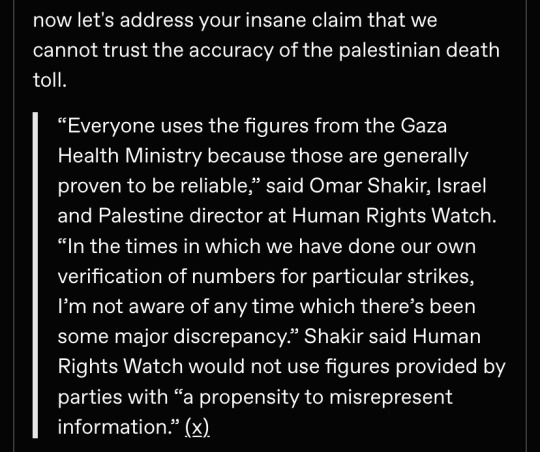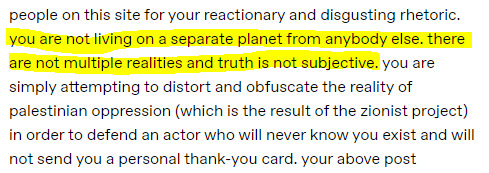#Russian Health Ministry
Explore tagged Tumblr posts
Text
HIV Is on the Rise Again in Russia
The number of new cases of HIV infection in Russia has been growing again. In 2022, 63,150 people were diagnosed with HIV, while a year earlier this figure was 61,098 people, according to the Russian Health Ministry. During the pandemic, fewer cases of HIV infection were detected in Russia due to reduced testing coverage and lockdowns. The HIV detection rate in Russia increased by eight percent…

View On WordPress
#antiviral medications#Dolutegravir#HIV epidemic in Russia#HIV treatment in Russia#Important Stories (IStories)#public health in Russia#Russian Health Ministry#Russian prisoners#Wagner Group
0 notes
Text
Russian Hacker Group 'Phoenix' Targets Indian Health Ministry Website Over Ukraine Conflict
Russian Hacker Group 'Phoenix' Targets Indian Health Ministry Website Over Ukraine Conflict #cybersecurity #hackers #Russia #India #UkraineConflict #Phoenix #CERT-In #datasecurity #HealthMinistry #informationtechnology #internationalconflict
Russian Hacker Group ‘Phoenix’ Targets Indian Health Ministry Website: The Union Health Ministry of India has reported an attempted hack on their website by the Russian hacker group ‘Phoenix’, which managed to access the ministry’s Health Management Information System portal. Photo by Markus Spiske on Pexels.com It is believed that the attack was launched in retaliation for India’s support of…

View On WordPress
0 notes
Text
A ninth-grade health and wellness textbook has caused a minor uproar in Russia after activist Yekaterina Mizulina — more commonly known for championing Internet censorship measures — unearthed excerpts showing dubious advice to young women about navigating the hostile world of male sexual predators. For example, the textbook urges schoolgirls to avoid wearing bright makeup and short skirts to prevent becoming victims of sexual violence, reasoning that such displays “provoke boys and men.” Despite claims from the book’s lead author that it’s not required reading in Russian schools, the victim-blaming lessons offered in the text have raised concerns that at least some schoolchildren are being subjected to a backward education in gender norms.
Sergey Vangorodsky, who coauthored The Foundations of Life Safety, told RTVI that Mizulina’s complaints are “unfounded” because the book is not standard reading in Russia’s high school curriculum.
However, several readers told Mizulina that the textbook is used in health and wellness classes at schools in Rostov-on-Don, Volgodonsk, and Tambov. It’s also available for sale online. “Given that not all school library collections are updated in a timely manner, it may still be in use in [other] schools. I’m confident that the Education Ministry will investigate the matter,” Mizulina wrote on her Telegram channel.
In a section called “Safe Behavior for Girls,” Vangorodsky and his coauthors write that women who are alone with a man “should be prepared for him to develop a desire for intimacy.” Here are some other eyebrow-raising snippets from The Foundations of Life Safety:
“Many conflicts and attacks occur due to the victim’s own behavior, signaling through her appearance that she is either ‘ripe for it’ (being in the wrong place at the wrong time), willing (too available), or defenseless (drunk, scared, aroused, [or] overly trusting). Avoid standing out among others with excessive extravagance.”
“If you are alone with a man (even one you know well), be prepared for him to develop a desire for intimacy with you. Maintain a relaxed demeanor, but do not try to flirt or tease him, as in an intimate setting, he may interpret your flirting as an invitation to intimacy and your resistance as playacting.”
“If you cannot escape or counter a rapist’s weapon or physical superiority, you can still defend yourself by leveraging men’s psychophysiological traits during sexual intercourse and targeting their vulnerable spots. Try to trick the rapist into believing you agree to intimacy, get him to lower his defenses, and then act decisively according to your chosen plan.”
“How not to become a victim of violence: When going to a party, a café, a bar, a concert, any large event, or somewhere with a bad reputation, do not wear very short skirts or paint your lips, eyelids, and eyelashes in wild colors. This provokes boys and men and is perceived by them as a signal.”
42 notes
·
View notes
Text
This decision was preceded by a "round table" with Russian officials and collaborators from the temporarily occupied territories, where supposedly the experience of countries in which private hospitals "voluntarily refused" to perform abortions was reviewed.
Quote: "The private clinics’ heads were asked to contribute to the demographic situation improvement by refusing to perform abortions. The colleagues positively evaluated this initiative, and today all private clinics in Crimea have officially informed the Crimean Ministry of Health of their voluntary refusal to provide abortion services," Skorupsky noted.
Officials in Russia-annexed Crimea say private clinics have stopped providing abortions
Over his more than two decades in power, Putin has forged a powerful alliance with the Russian Orthodox Church and has put “traditional family values,” as well as boosting the country's declining population, at the cornerstone of his policies.
As part of the effort, authorities in several Russian regions in recent months sought to convince private clinics to stop terminating pregnancies. In Tatarstan in central Russia, officials said about a third have agreed to stop offering abortions; in the Chelyabinsk region in the Ural mountains, several clinics did as well. In the westernmost region of Kaliningrad, local legislators said they were mulling a ban for private clinics.
A nationwide ban is also something lawmakers and Russia's Health Ministry are contemplating, alleging that private clinics frequently violate existing regulations restricting access to abortion.
State statistics show that private clinics in Russia, where free, state-funded health care is available to all citizens, accounted for about 20% of all abortions in recent years. Some women who shared their experiences in pro-abortion online communities said they preferred private clinics where they could get an appointment faster, conditions were better and doctors did not pressure them to continue the pregnancy.
Crimea's Russian-installed health minister, Konstantin Skorupsky, said in an online statement that private clinics on the peninsula some time ago "offered to contribute to improving the demographic situation by giving up providing abortions,” and as of Thursday, all of them had done so.
His statement did not mention the city of Sevastopol, which is administered separately, and it was unclear if private clinics there were still providing abortions.
Two chains of private clinics in Crimea contacted by The Associated Press on Thursday by phone confirmed they no longer provide abortions, citing orders from the management or the authorities. One said it's been about a month since they stopped offering the procedure to women.
[bolding my own]
the use of “demographic situation” is so vile & so clearly colonial
214 notes
·
View notes
Text
Donald Padgett at The Advocate (12.30.2024):
The director of a Russian travel agency arrested last month on charges of international LGBT extremism died yesterday while in custody in Moscow, OVD-Info reports. Andrei Kotov, 48, was found dead around 4 a.m. on Sunday at the Vodnik pretrial detention center, where he was awaiting trial on charges of supporting an international LGBT extremist terrorist movement. Leisan Mannapova, Kotov’s lawyer, confirmed her client died by suicide. His body was discovered in his cell covered in blood, and “cuts were found” on his body, an internal source told RIA Novosti.
Kotov ran Men Travel, a travel agency reportedly catering to gay men. He had recently concluded a cruise along the Volga River and was planning a trip to Egypt to ring in the New Year at the time of his arrest. Security forces arrested Kotov on Nov. 28 but it was not made public until two days later. Video of the arrest posted to multiple Telegram channels shows the muscled Kotov shirtless with his hands cuffed behind his back. Kotov testified at a court hearing earlier this month that he was beaten and threatened with a stun gun if he did not confess his alleged crimes during the arrest. “About 15 people came to me at night, they beat me, hit me in the face, on the legs, left bruises,” Kotov said at a detention hearing on Dec. 2, Zona Media reported at the time. “I did not offer any resistance. I was extremely surprised by this procedure.”
He told the court he was beaten by two masked men who demanded he confess to LGBT extremism. Kostov said one man punched him in the face while the second man threatened him with a stun gun. When he insisted the tours were not LGBT-centric, Kostov said he was escorted to the kitchen where he was told to say hello to the man’s “brothers in the regiment.”
[...]
Last month, Putin signed two new laws outlawing the promotion of non-traditional families and the adoption of Russian children by foreign nationals from countries that recognize a person’s right to gender-affirming care.
The adoption law effectively prohibits citizens of Australia, Austria, Argentina, Belgium, Britain, Canada, Denmark, Estonia, Finland, Germany, Iceland, Italy, Norway, Spain, Switzerland, and other countries from adopting children from Russia or taking guardianship over them. Citizens of the U.S. were banned from adopting Russian children in 2012. The second law bans what it terms “childfree propaganda” that promotes non-traditional families as a positive environment for children. Media companies and social media sites will be required to monitor content to ensure compliance with the law. An exemption would be made for positive portrayals of a monastic life that included celibacy.
In December of 2022, Putin signed a law strengthening a ban on LGBTQ “propaganda” in Russia and making it illegal to promote same-sex sexual relations or suggest non-heterosexual attractions are “normal.” Individuals can be fined up to 400,000 rubles ($6,370) for “LGBT propaganda” and up to 200,000 rubles ($3,185) for “demonstrations of LGBT and information that encourages a change of gender among teenagers.” The fines increase to 5 million rubles ($80,000) and 4 million rubles ($64,000) respectively for legal entities. Last year, Putin directed sexologists in the country to treat homosexuality as a mental illness no different than bestiality and ordered the Ministry of Health to create an institute to study homosexuals at the Serbsky Center for Psychiatry and Narcology. [...] In November of last year, Putin requested that the Russian government officially recognize the “international public LGBT movement” as “extremist” under the law, and his request was granted that same month. Less than two days later, security forces raided at least four LGBTQ+ establishments in Moscow.
Andrei Kotov, who ran Men Travel, died in Russian prison custody earlier this week on charges that he violated Russia's arbitrary laws that baselessly paint the international LGBTQ+ movement as "extremist".
14 notes
·
View notes
Text

https://www.reuters.com/business/trump-readies-order-steep-tariffs-goods-mexico-canada-china-2025-02-01/
11 notes
·
View notes
Text
Latest news from Ukraine
❗️Air Pollution
A dust storm has once again swept across Ukraine, with the highest levels of air pollution recorded in the Kirovohrad, Dnipropetrovsk, Cherkasy, Kherson, and Donetsk regions.
❗️Ugledar
Military criticizes the situation on the front: "Ugledar was doomed, but the order to retreat never came," said Voroshnov, an aerial scout from the 72nd Brigade of the Ukrainian Armed Forces. According to him, it was impossible to save the city, and everyone knew that "the countdown was in days and hours," but no order for withdrawal was issued. "Where will we retreat to? No one knows. As long as the enemy has the strength to push us back, we will keep moving backward."
Moreover, "Out of 50 recruits sent to reinforce the 72nd Brigade in Ugledar, only four made it to the front lines, and they deserted after the first rotation," said soldier Boyko. He noted that mobilized men aged 52-56 were sent to the brigade, with 30 of them being reassigned to rear units and hospitals due to health issues. Of the remaining 20, 16 deserted on the second day, leaving only four soldiers who also deserted after the first rotation. Boyko describes the loss of Ugledar as a "localized collapse of the front" and claims that similar situations are occurring along the entire front line. He also criticizes and calls for the dismissal of the military leadership of the country.
❗️Salary Reductions and Tax Increases
In October, Ukrainians will receive lower wages due to an increase in the military tax. The law will come into effect after October 15. Until then, advances will still be paid with the military tax at 1.5% (since the law hasn't taken effect yet). However, for the remainder of October, the tax will be 5%, including the advance. Employers won't be able to reclaim the paid advance, so the Ministry of Finance suggests deducting these funds from the final salary payment. As a result, wages will decrease not only by 3.5% due to the tax hike but also by the amount already deducted from the advance.
❗️Freedom of Speech
The restriction on language use in schools will only apply to Russian, while teaching in EU languages or the languages of indigenous peoples alongside the state language will not be considered a violation, according to a new bill. The document also notes that private schools will be able to choose their language of instruction, except for the language of the "aggressor country." The bill will be sent to the relevant committee for review today.
It is also worth noting that Article 10 of the Ukrainian Constitution guarantees the free development, use, and protection of Russian and other minority languages in Ukraine.
❗️Money Laundering
"Energoatom" has ordered protective measures for the South Ukrainian Nuclear Power Plant worth nearly 600 million UAH ($16.4 million). According to reports, the construction of engineering protection for critical elements of the station will take over a year. A contract with PJSC "Yuzhenerhrostroi" was signed without an open tender, with the work to be completed by December 25, 2025, according to the media. The contract terms are hidden, given the wartime conditions.
via Union of Communists of Ukraine
15 notes
·
View notes
Text

[The Daily Don]
* * * *
LETTERS FROM AN AMERICAN
June 24, 2023
HEATHER COX RICHARDSON
JUN 25, 2023
Yesterday, forces from the private mercenary Wagner Group crossed from Ukraine back into Russia and took control of the city of Rostov-on-Don, a key staging area for the Russian war against Ukraine. As the mercenaries moved toward Moscow in the early hours of Saturday (EDT), Russian president Vladimir Putin called them and their leader, Yevgeny V. Prigozhin, traitors. This morning, they were bearing down on Moscow when they suddenly stopped 125 miles (200 km) from the Russian capital. This afternoon the Russian government announced that Belarus president Aleksandr Lukashenko had brokered a deal with Prigozhin to end the mutiny: Prigozhin would go to Belarus, the criminal case against him for the uprising would be dropped, the Wagner fighters who did not participate in the march could sign on as soldiers for the Russian Ministry of Defense, and those who did participate would not be prosecuted.
Prigozhin said he turned around to avoid bloodshed.
U.S. observers don’t appear to know what to make of this development yet, although I have not read anyone who thinks this is the end of it (among other things, Putin has not been seen today). What is crystal clear, though, is that the ability of Prigozhin’s forces to move apparently effortlessly hundreds of miles through Russia toward Moscow without any significant resistance illustrates that Putin’s hold over Russia is no longer secure. This, along with the fact that the Wagner Group, which was a key fighting force for Russia, is now split and demoralized, is good news for Ukraine.
In the U.S. the same two-day period that covered Prigozhin’s escapade in Russia covered the anniversaries of two historic events. Yesterday was the 51st anniversary of what we know as “Title 9,” or more accurately Title IX, for the part of the Education Amendments Act of 1972 that prohibited any school or education program that receives federal funding from discriminating based on sex. This measure updated the Civil Rights Act of 1964, and while people today tend to associate Title IX with sports, it actually covers all discrimination, including sexual assault and sexual harrassment. Republican president Richard Nixon signed the measure into law on June 23, 1972 (six days after the Watergate break-in, if anyone is counting).
Fifty years and one day later, the U.S. Supreme Court issued the Dobbs v. Jackson Women’s Health Organization decision overturning the 1973 Roe v. Wade decision that recognized a woman's constitutional right to abortion. That is, a year ago today, for the first time in our history, rather than expanding our recognition of constitutional rights, the court explicitly took a constitutional right away from the American people.
The voyage from Title IX to Dobbs began about the same time Nixon signed the Education Amendments Act. In 1972, Gallup polls showed that 64% of Americans, including 68% of Republicans, agreed that abortion should be between a woman and her doctor—a belief that would underpin Roe v. Wade the next year—but Nixon and his people worried that he would lose the fall election. Nixon advisor Patrick Buchanan urged the president to pivot against abortion to woo antiabortion Catholics, who tended to vote for Democrats.
As right-wing activists like Phyllis Schlafly used the idea of abortion as shorthand for women calling for civil rights, Republicans began to attract voters opposed to abortion and the expansion of civil rights. In his campaign and presidency, Ronald Reagan actively courted right-wing evangelicals, and from then on, Republican politicians spurred evangelicals to the polls by promising to cut back abortion rights.
But while Republican-confirmed judges chipped away at Roe v. Wade, the decision itself seemed secure because of the concept of “settled law,” under which jurists try not to create legal uncertainty by abruptly overturning law that has been in place for a long time (or, if they do, to be very clear and public about why).
So Republicans could turn out voters by promising to get rid of Roe v. Wade while also being certain that it would stay in place. By 2016 those antiabortion voters made up the base of the Republican Party. (It is quite possible that then–Senate majority leader Mitch McConnell refused to permit President Barack Obama to fill a vacant seat on the Supreme Court because he knew that evangelicals would be far more likely to turn out if there were a Supreme Court seat in the balance.)
But then Trump got the chance to put three justices on the court, and the equation changed. Although each promised during their Senate confirmation hearings to respect settled law, the court struck down Roe v. Wade on the principle that the federal expansion of civil rights under the Fourteenth Amendment incorrectly took power from the states and gave it to the federal government. In the Dobbs majority decision, Justice Samuel Alito argued that the right to determine abortion rights must be returned “to the people’s elected representatives” at the state level.
Fourteen Republican-dominated states promptly banned abortion. Alabama, Arkansas, Kentucky, Louisiana, Missouri, Oklahoma, South Dakota, Tennessee, and Texas banned abortion with no exceptions for rape or incest; Mississippi banned it with an exception for rape but not incest; and North Dakota banned it except for a six-week window for rape or incest. West Virginia also has a ban with exceptions for rape and incest. In Wisconsin a law from 1849 went back into effect after Dobbs; it bans abortion unless a woman would die without one. Texas and Idaho allow private citizens to sue abortion providers. Other states have imposed new limits on abortion.
But antiabortion forces also tried to enforce their will federally. In April, Trump-appointed U.S. District Judge Matthew Kacsmaryk ruled that the Food and Drug Administration should not have approved mifepristone, an abortion-inducing drug, more than 20 years ago. That decision would take effect nationally. It is being appealed.
When the federal government arranged to pay for transportation out of antiabortion states for service members needing reproductive health care, Senator Tommy Tuberville (R-AL) put a blanket hold on all military appointments—250 so far—until that policy is rescinded. For the first time in its history, the Marine Corps will not have a confirmed commandant after July 10. In the next few months, five members of the joint chiefs of staff, including General Mark Milley, its chair, are required by law to leave their positions. Tuberville says he will not back down.
On June 20, Representative Elise Stefanik (R-NY), chair of the House Republican conference, called for a federal abortion ban at 15 weeks, saying that the right to life “is fundamental to human rights and the American dream” and calling out the justices who decided Roe v. Wade as “radical judges who frankly took the voice away from the American people…. The people are the most important voices” on abortion, she said.
But, in fact, a majority of Americans supported abortion rights even before Dobbs, and those numbers have gone up since the decision, especially as untreated miscarriages have brought patients close to death before they could get medical care and girls as young as ten have had to cross state lines to obtain healthcare. Sixty-eight percent of OB-GYNs recently polled by KFF said Dobbs has made it harder to manage emergencies; 64% say it has increased patient deaths. A recent USA Today/Suffolk University poll shows that 80% of Americans—65% of Republicans and 83% of independents—oppose a nationwide ban on abortion while only 14% support one. Fifty-three percent of Americans want federal protection of abortion; 39% oppose it.
In politics, it seems the dog has caught the car. The end of Roe v. Wade has energized those in favor of abortion rights, with Democrat-dominated states protecting reproductive rights and the administration using executive power to protect them where it can. Republicans are now running away from the issue: the ad-tracking firm AdImpact found that only 1% of Republican ads in House races in 2022 mentioned abortion.
At the same time, antiabortion activists achieved their goal and stand to be less energized. This desperate need to whip up enthusiasm among their base is likely behind the Republicans’ sudden focus on transgender children. Right-wing media has linked the two in part thanks to the highly visible work of the American College of Pediatricians, which, despite its name, is a political action group of about 700 people, only 60% of whom have medical degrees. (They broke off from the 67,000-member American Academy of Pediatrics in 2002 after that medical organization backed same-sex parents.) They are prominent voices against both abortion and gender-affirming health care.
In Nebraska in May, a single law combined a ban on abortion after 12 weeks and on gender-affirming care for minors. “This bill is simply about protecting innocent life,” Republican state senator Tom Briese said.
Vice President Kamala Harris has made protecting reproductive rights central, traveling around the country to talk with people about abortion rights and pressing the administration to do more to protect them. At a rally in Washington, D.C., on Friday, she articulated the message of fifty years ago: “We stand for the freedom of every American, including the freedom of every person everywhere to make decisions—about their own body, their own health care and their own doctor,” she said. “So we fight for reproductive rights and legislation that restores the protections of Roe v. Wade. And here’s the thing. The majority of Americans are with us, they agree.”
—
LETTERS FROM AN AMERICAN
HEATHER COX RICHARDSON
#heather cox richardson#letters from an american#women's rights#russia#abortion rights#health care#Election 2024
141 notes
·
View notes
Text
10 stories they chose not to tell you this week.
The Vigilant Fox
Jan 19, 2025
10 – Bill Gates’ New Bioterror Project Exposed
Gates revealed to the Wall Street Journal that he had a three-hour conversation with Trump about “global health,” saying he was “frankly impressed.”
What Gates isn’t telling you is that he has been funding risky research projects, including a $9.5 million effort at the University of Wisconsin-Madison to study how bird flu viruses (H5N1) might evolve to infect humans.
According to epidemiologist
Nicolas Hulscher, MPH
, this work could actually make bird flu more transmissible to humans and “qualifies as bioterrorist activity.”
“And also recently, the Russian Ministry of Defense gave a briefing, and in the briefing, they laid out who is funding these illicit African Biolabs run by the US Military. It’s none other than the Bill and Melinda Gates Foundation and even the Clinton Foundation,” Hulscher revealed.
“So these guys are funding this extremely dangerous research. It’s risking millions of lives,” he warned.
Bill Gates has also explicitly referred to India as his “laboratory” for testing experimental drugs. Such statements raise serious ethical questions about the billionaire’s intentions, especially when he openly expresses a desire to reduce the world’s population.
Adding fuel to the fire, the U.S. Department of Health and Human Services (HHS) recently announced an investment of nearly $600 million in Moderna’s bird flu vaccine development. As journalist Maria Zeee (@zeee_media) pointed out, “Someone is expecting a return on that investment.”
“Why is a man that funds bioterrorist activities, speaking bioterrorist-like activities, rather, speaking with the president about public health?” Hulscher asked.
“He should not be allowed to meet with the President. In my opinion, he should actually be behind bars.”
Meanwhile, more damning evidence continues to mount against the COVID-19 injections.
Nicolas Hulscher, MPH
lays out the evidence, demonstrating why these shots should be pulled from the market.
Watch as he presents the facts.
(See 9 More Revealing Stories Below)
9 - Bill Maher Torches California’s Disastrous Wildfire Response in Brutal Monologue
8 - James O’Keefe Exposes Secret Pentagon Plot to Sabotage Trump’s Return
7 - Scientists make another damning discovery about the COVID-19 mRNA injections.
6 - WaPo Cartoonist Arrested for Child Porn Depicted Trump Supporters as Nazis for Complaining About Grooming
While you’re here, don’t forget to subscribe to this page for more weekly news roundups.Subscribe
#5 - Trump’s Pick for CIA Chief Obliterates Adam Schiff, Sets Him Straight on Hunter’s Laptop
#4 - The FDA finally bans food dye Red No. 3, citing serious concerns about its link to cancer.
#3 - Shocking Cover-Up Exposed in Explosive Tucker Carlson Interview
#2 - Arab Officials: Trump Envoy Did More to Pressure Israel in One Meeting Than Biden Did All Year
#1 - Storm-ravaged North Carolina sends a dire message to America.
Plus, Lt. Colonel Pete Chambers joins to discuss the mounting security concerns surrounding Trump’s Inauguration.
Share
BONUS #1 - Dave Chappelle Captures Attention With His Comments on Trump and Jimmy Carter
BONUS #2 - The Meat Upgrade You Didn’t Know You Needed
BONUS #3 - Mel Gibson Drops Two Medical Bombshells on the Joe Rogan Podcast
BONUS #4 - How to Get Ivermectin, Z-Pak and More
BONUS #5 - Jeffrey Epstein’s Former Cellmate Alleges Shocking Scheme to Impeach Trump
7 notes
·
View notes
Text
The Women of World War I — Part I
Before The Great War, working class women were not new to factory work. There was, however, a division between women's and men's jobs. After war was declared, women increasingly took on the men's jobs to fill the gap left when men were recruited as soldiers. With munitions factories producing for the war effort, there were even more jobs for women to fill – many of them dangerous and requiring significant physical strength.
While the fashion plates were still catering to the well-to-do, the war did influence women's fashion in consequential and lasting ways.

Clothing became more sensible. Gone were the restricting undergarments of past eras. Clothing was more tailored and most significantly, hemlines rose to several inches above the ankle.


In Britain women joined the Voluntary Aid Detachment and Queen Alexandra’s Royal Army Nursing Corps. In the USA, the Marine Corps Women’s Reserve, and the special women’s battalions on the Russian Front.
In rural areas women were called to duty to perform an assortment of farm work and chores that had been previously done by the men who went to war. In the image on the right, a catalog page displays styles of overalls and briches particularly suited to outdoor work.

Above are two very different roles that women took during WW I. The Women's Motor Corps of the American Red Cross was largely made up of wealthy women who had the means of access to an automobile and learned to drive. The munitions factory girls on the other hand, worked at physically demanding, dangerous work and likely came from modest means. The latter were called "Canary Girls" because the exposure to TNT caused a yellowing of the skin. They faced not only safety but also health hazards, for very low wages.



Flora Lion (British/English, 1878-1958) • Women's Canteen at Phoenix Works, Bradford, England • 1918
Flora Lion, an established society portrait artist, was commissioned by the Ministry of Information to complete two large paintings showing factory scenes during the First World War.
Stay tuned for Part II...
Sources: French History Podcast, Imperial War Museum, Wikipedia, American Red Cross, BBC.com
#fashion history#women's history#ww 1 history#canary girls#history of workers#1910s photography#american red cross#imperial war museum#the resplendent outfit blog#flora lion#woman artist#war artist
16 notes
·
View notes
Text
Reply to @girlfictions:

1. I didn’t skirt it, that why the definition of Zionism was the very first thing in my post. Now, if you choose to reject that definition and want the word to mean whatever you want it to mean that’s on you. If you think the mere existence of Israel as a country is evil and a bad thing to support, then there’s no productive conversation to be had with you anyway.
2.
Hamas leader's son who became a spy explains what Hamas really wants

What is Gaza’s Ministry of Health and how does it calculate the war’s death toll?



Amnesty International Report, 2015
Tunnel shaft inside Shifa
Article from 2014
Hamas’ rules for social media activists, from 2014
Wounded man at Gaza hospital criticizes Hamas for hiding among civilians
Bodies of two hostages found near Al Shifa Hospital
Body of a third hostage, a Tanzanian agricultural intern, found, although not mentioned where

The second Israel declared independence, 5 Arab countries declared war against them and they won.
List of expulsions and exoduses of Jews
Iraq expelled Jews to Israel
Why there are so many Palestinian refugees

The point here is not "Israel is a saint country that never does wrong". The point is that Israel is not better or worse than any other country or territory. If a Palestinian or someone with connections to Palestine is allowed to love it in spite of what Hamas and other terrorist groups have done and are currently doing without being demonized, cancelled or called evil; then it's only natural to concede that someone from Israel or with connections to Israel is allowed to love it in spite of what its government has done or does currently without being demonized, cancelled or called evil. Especially after Israel suffered a terrorist attack and is receiving antisemitism all over the world.

PBS article from 2007 summarizing Hamas and/vs Fatah, including Hamas’ objectives
Hamas and PIJ use of suicide bombings
Hamas spokesperson says tunnels are to protect the fighters and civilians are the responsibility of the UN and Israel
youtube
UNRWA Education: Textbooks and Terror
Review of 2022 UNRWA-Produced Study Materials in the Palestinian Territories
Hamas Original Charter. Excerpt:


Student speaker at a UPenn rally, the university Noah attends
Pro-Palestine Rally in Sydney, Australia ("Death to Israel", "Intifada", "Gas the Jews")
Rash of international antisemitism carries chilling historical hallmarks
Antisemitic mob storms through Russian airport as flight from Tel Aviv lands
Suspect arrested in death of Jewish protester in Southern California
Pro-Palestine group gives out NYC map calling for 'direct action' on landmarks as city blasts 'hateful rhetoric' and alerts the NYPD

Are you implying that I'm a nonce? Because shipping two fictional characters is not being a nonce. You know what is noncey?
Threatening someone to release CP of them.

Reply right before yours:


made by someone whose first post was said reply, and only has posts reblogging other people's takes re: Noah, Israel, Palestine
They blasted me for saying we live in different realities, then proceeds to praise radicalism and call me a white supremacist.
Exploring hate: How antisemitism fuels white nationalism
The response that worried me (I don't know or care about the ethnicity or religion of this person).

Glorification of terrorism, dehumanization of the other, refusal to listen to other points of view, inappropriate anger. All of these are signs of radicalization.
Said person reblogged this:

A letter from Osama Bin Laden went viral on TikTok, with many users of every ethnicity and religion praising it. The letter contains several antisemitic tropes, condems homosexuality and of course, idealizes Sharia Law.
youtube
Rolling Stone article on it
#noah schnapp#antisemitism#jumblr#radicalization#extremism#i couldn't care less about noah schnapp knowing i exist#but one day someone will get ideas from this wretched hellsite and try to decolonize a bus full of people or something#and at least i will be able to sleep at night#because with my insignificant voice from my tiny dustspeck of a corner of the internet#i tried to warn y'all#Youtube
36 notes
·
View notes
Text
Russia Develops Its Own Cancer Vaccine, Expected to Arrive in 2025: News Agency

Cancer Vaccine: In what can be said to be the discovery of the century, the Russian government says it has developed its own cancer vaccine. The vaccine is expected to be introduced in early 2025. According to a report by the Russian news agency TASS, Andrey Kaprin, the General Director of the Radiology Medical Research Center of the Russian Ministry of Health, announced on Radio Rossiya that Russia has created its own mRNA vaccine for cancer, which will be provided to patients at no cost.
“The vaccine’s pre-clinical trials had shown that it suppresses tumor development and potential metastases,” Director of the Gamaleya National Research Center for Epidemiology and Microbiology Alexander Gintsburg told TASS. Read more
4 notes
·
View notes
Text
The Azerbaijan Airlines (AZAL) plane that crashed in western Kazakhstan while on its way from Baku to Grozny on Wednesday went down as a result of a Russian anti-aircraft missile, Euronews reported on Thursday, citing government sources. According to the sources, Russian air defense forces fired a surface-to-air missile at the AZAL flight amid increased drone activity in Grozny. The missile reportedly exploded near the plane, damaging its fuselage.
Euronews sources also said the damaged plane was denied permission to land at Russian airports, despite the pilots requesting an emergency landing. Subhonkul Rahimov, a passenger on the Baku-Grozny flight who was injured in the crash, told Russian state media that the Azerbaijan Airlines crew attempted to land in Grozny three times. The crew was instructed to fly over the Caspian Sea toward Aktau in western Kazakhstan, according to Euronews. The plane’s GPS navigation systems were reportedly jammed throughout the flight over the sea.
The Azerbaijani outlet Caliber.Az reported, citing “reliable government sources,” that the plane was targeted by a Russian Pantsir-S air defense system as it approached Grozny. According to the outlet, Russian electronic warfare systems “completely paralyzed the communication systems” of the Azerbaijani aircraft, causing it to disappear from radar.
The British aviation security company Osprey Flight Solutions warned its clients that the Azerbaijan Airlines flight was “likely shot down by a Russian military air-defense system,” the AP reported.
Additionally, Reuters reported that the flight “was downed by a Russian air defence system,” citing four sources in Azerbaijan with knowledge of the government’s investigation.
The Azerbaijani, Russian, and Kazakh governments have not officially commented on the reports that the AZAL plane was downed by Russian air defenses. On December 25, Azerbaijani President Ilham Aliyev stated that the flight had altered its course “due to worsening weather conditions” and that the crash occurred “during landing” in Kazakhstan. “The causes of the crash are unknown to us. There are various theories, but I believe it’s too early to discuss them. The matter must be thoroughly investigated,” Aliyev said.
Kremlin spokesperson Dmitry Peskov said that Russia would refrain from “building any hypotheses” until the investigation is complete. Meanwhile, Kazakhstan’s Senate Chairman Maulen Ashimbayev dismissed as "speculative" any attempts to "draw conclusions from photos, suggesting these are the result of certain actions, and so on."
Kazakh Deputy Prime Minister Kanat Bozumbayev, who is leading the government’s commission investigating the crash, told Tengrinews that authorities are currently unable to confirm or dismiss any theories due to the ongoing investigation. During a subsequent briefing in Aktau, he reiterated that it is “impossible to rule out any theory.” Bozumbayev added that Kazakhstan does not have an official version of the events, and neither Russia nor Azerbaijan has provided one.
Shortly after the crash, videos emerged showing fragments of the plane’s tail section, which appeared to have damage consistent with that caused by anti-aircraft missile fragments.
The crash claimed the lives of citizens from three countries: Azerbaijan, Russia, and Kazakhstan. Azerbaijan’s Health Ministry released a list of 25 victims, including passengers and crew members aged 19 to 64. According to the Azerbaijani outlet 1news, the list only included Azerbaijani citizens. Kazakhstan’s Emergency Situations Ministry reported that six Kazakhstani nationals were among the dead, while Kazakhstani Transport Minister Marat Karabayev confirmed that seven Russians were also killed. All three Kyrgyz citizens aboard survived.
As of 3:45 p.m. Moscow time on December 26, the bodies of 10 victims had been identified: four Azerbaijanis, three Russians, and three Kazakhs, the Kazakhstani Emergency Situations Ministry told Russian state media.
On the morning of December 26, an emergency services plane transported nine Russian survivors from Aktau to Moscow. Azerbaijani citizens who were injured in the crash were being prepared for transport to Baku later that day.
The Azerbaijani authorities declared December 26 a day of mourning. A minute of silence was observed at Baku Airport, where the Azerbaijan Airlines flight had begun, and a memorial stand was set up to honor the victims. In Moscow, flowers were placed outside the Azerbaijani Embassy. The Chechen authorities pledged to assist the families of those killed and injured in the crash.
7 notes
·
View notes
Text
‼️Consequences of the Russian missile attack in Zaporizhzhya
UPD: In Zaporizhzhia, ten were injured as a result of the Russian attack, two of them are in serious condition. People remain under the rubble of one of the buildings, the Ministry of Health reported.
#ukraine#russia is a terrorist state#russia invades ukraine#russian war crimes#russia ukraine war#russian invasion#russian agression#russian terrorism#russia must burn#fuck russia#russia
34 notes
·
View notes
Text






[ 📹 Scenes from inside the Crocus City Hall where several gunmen burst into the theater and opened fire on the crowds settling in for a show before throwing several smoke or incendiary bombs and lighting a fire that nearly burnt the building to the ground. More than 40 people were killed and over 100 wounded in the terrorist attack.]
[ 📈 The Russian Ministry of Health released the names of the victims of the Crocus City Hall terrorist attacks.]
[ 📸 Photo of the white Renault the gunmen were seen escaping from the scene driving, along with a map of the Crocus City Hall.]
🇷🇺 🚨
FORTY KILLED AND MORE THAN 100 INJURED IN TERRORIST ATTACK AT CROCUS CITY HALL IN THE RUSSIAN FEDERATION
At least forty people were killed and more than 100 wounded at Crocus City Hall, a concert venue located in the Krasnogorsky District in central Moscow region, in the Russian Federation, after several armed men opened gunfire on crowds just settling down for a symphony orchestra show.
Nearly all the tickets were sold out at the time of the attacks, which began around 8pm when a number of men burst into the venue, with at least one of the men carrying and then throwing a smoke or incendiary bomb, and began firing on the unsuspecting concert-goers at point-blank range with automatic gunfire.
“Between the second and third call, at least three men in camouflage and without masks ran through the stalls,” said a reporter with Russian news outlet, RIA Novosti, who was at the scene of the emergency said.
“They opened fire from automatic weapons and threw a grenade or incendiary bomb. People lay down on the floor. 15-20 minutes later, they began to crawl out. Someone succeeded," the correspondant added.
Witnesses said there were Security guards at the show, however being unarmed, there was little they could do to offer resistance to the gunmen.
Other witnesses told Ria Novosti that they heard several short bursts of gunfire before seeing smoke and people running from the hall. Some ran to the bathrooms and barricaded themselves inside, while others rushed towards the exits.
At some point, the smoke or incendiary bombs used by the gunmen set fire to the concert hall, with dozens of police, fire brigades and the Russian National Guard responding to the atrack, while personnel from the Federal Investigative Committee and the prosecutor's office responded soon after.
Some witnesses said that after the gunfire, they heard a loud explosion before fire engulfed much of Crocus City Hall. Local fire brigades, though responding quickly to the call, were unable to enter due to the active gunmen inside and ended up using helicopters to drop water over the hall and extinguish the fire, though the upper floors of the building are said to be completely burnt out.
By 10pm, the roof of the Hall had collapsed, however it is unclear if there were still live or wounded victims inside at the time of the collapse. The fire burnt an area that totals more than 12'900 square meters.
According to Federal authorities, the gunmen escaped the scene as the crowds ran out of the concert hall, and were seen driving away in a white Renault sedan. Investigations of the terrorist attack are now underway.
#source1
#source2
#source3
#videosource
@WorkerSolidarityNews
#russia#russia terrorist attack#russia news#russian news#russian federation#terrorist attack#terrorism#politics#news#geopolitics#world news#global news#international news#breaking news#current events#special military operation#russian#russia terrorism#cracus city hall#krasnogorsky#krasnogorsk#moscow#moscow region#moscow terrorist attack#international affairs#foreign affairs#europe#europe news#eastern europe#european news
13 notes
·
View notes
Text
ISRAEL REALTIME - morning updates - Nov 1
— As previously mentioned, the IDF lost 11 soldier heroes yesterday in battle. May their memories be a blessing!
— IDF INTERCEPTS MISSILE FROM LEBANON… overnight the IDF shot down a surface-to-air missile fired from Lebanese territory at an IDF drone. In response, Air Force aircraft attacked the source of the fire from which the missile was launched as well as the squad that carried out the launch.
— IDF NAVY DEPLOYS… several Israeli Navy Missile Frigates to the Rea Sea by Eilat. (Analyst) The ships have capabilities for the interception of cruise missiles and suicide drones if fired from Yemen. They are not a (major) attack force, but defensive.
— IDF PUSHES JENIN (Shomron / West Bank)… IDF forces operated in Jenin to destroy terrorist infrastructure. IDF bulldozers "shaved" roads to reveal explosives. Arab sources say 3 terrorists killed.
— US CITIZENS “STUCK”… US officials state 500 citizens have been stuck in Gaza, with Hamas refusing to allow foreign nationals to leave. Supposedly Hamas will allow them to leave today.
— REUTERS SAYS ONLY FOREIGNERS… According to Reuters, based on a Qatari source, an agreement (with Hamas) to evacuate wounded and foreign nationals is separate from any other negotiations (no hostages).
— EGYPTIAN AMBULANCES ENTER… pictures from the Gaza/Egypt border show Egyptian ambulances entering Gaza to evacuate wounded.
— EVACUEE HEALTH HOTLINE… The Ministry of Health opened a dedicated hotline with the aim of ensuring that all citizens staying outside their homes receive medical coverage and assistance at their temporary residence, and for the duration. *5400, extension 4 in languages: Hebrew, Arabic, English and Russian.
25 notes
·
View notes